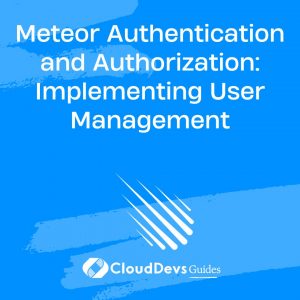Hiring Meteor Developers: A Comprehensive Interview Questions Guide
In the dynamic landscape of full-stack JavaScript development, Meteor has emerged as a powerful platform for building real-time web applications. To navigate the process of hiring Meteor developers effectively, this guide equips you with essential interview questions and strategies to identify top-tier candidates with the technical expertise, problem-solving acumen, and Meteor proficiency your team requires.
Table of Contents
1. How to Hire Meteor Developers
Embark on your journey of hiring Meteor developers with these strategic steps:
Job Requirements: Define specific job prerequisites outlining the desired skills and experience for your Meteor development role.
Search Channels: Utilize job boards, online platforms, and developer communities to unearth potential Meteor developer candidates.
Screening: Evaluate candidates based on their Meteor proficiency, full-stack JavaScript skills, and supplementary knowledge.
Technical Assessment: Develop a comprehensive technical evaluation to assess candidates’ coding abilities, understanding of real-time applications, and problem-solving capabilities.
2. Core Skills to Look for in Meteor Developers
When evaluating Meteor developers, prioritize these core skills:
Meteor Proficiency: A deep understanding of Meteor’s architecture, including its real-time data synchronization, packages, and MongoDB integration.
Full-Stack JavaScript: Proficiency in JavaScript programming for both the front-end and back-end, utilizing technologies like Node.js and MongoDB.
Real-Time Application Development: Knowledge of building real-time web applications using Meteor’s data streams and reactivity.
Database Integration: Experience in integrating MongoDB databases with Meteor applications for efficient data storage and retrieval.
Package Management: Familiarity with Meteor’s package management system and the ability to incorporate third-party packages to enhance application functionality.
Version Control: Proficiency in using version control systems like Git to collaborate effectively with team members on codebases.
3. Meteor Developer Hiring Process Overview
Here’s a high-level overview of the Meteor developer hiring process:
3.1 Define Job Requirements and Skillsets
Lay a strong foundation by outlining clear job requirements, specifying the skills and experience you’re seeking in Meteor developer candidates.
3.2 Craft Compelling Job Descriptions
Create engaging job descriptions that accurately convey the responsibilities and opportunities associated with the Meteor development role.
3.3 Develop Meteor Developer Interview Questions
Design a comprehensive set of interview questions covering Meteor intricacies, real-time application development, MongoDB integration, and full-stack JavaScript concepts.
4. Sample Meteor Developer Interview Questions and Answers
Explore these sample questions and answers to assess candidates’ Meteor skills:
Q1. Explain Meteor’s concept of reactivity. How does Meteor achieve real-time data synchronization between the server and the client?
A: Meteor achieves reactivity through a combination of technologies such as Distributed Data Protocol (DDP) and Minimongo. DDP enables real-time communication between the server and client, while Minimongo allows the client to maintain a local copy of the database and receive updates.
Q2. Describe the process of creating a new Meteor application. What are the essential components and files in a Meteor project?
A: To create a new Meteor application, you’d use the meteor create command. Essential components include the “client” and “server” directories, where you place client and server code respectively, and the “lib” directory for shared code.
Q3. Implement a Meteor template that displays a list of items from a MongoDB collection. Provide a brief explanation of the code.
// HTML
<template name="itemList">
<ul>
{{#each items}}
<li>{{name}}</li>
{{/each}}
</ul>
</template>
// JavaScript
import { Template } from 'meteor/templating';
import { Items } from '/imports/api/items';
Template.itemList.helpers({
items() {
return Items.find();
},
});
Q4. Explain the concept of Meteor methods. How can you use methods to perform server-side operations in a Meteor application?
A: Meteor methods are functions defined on the server and called from the client. They allow you to perform server-side operations securely, such as database inserts, updates, and deletions, while abstracting the communication details.
Q5. Describe Meteor’s approach to handling data security. How can you secure data transmission and implement access control in a Meteor application?
A: Meteor employs various security mechanisms, such as data validation, allow/deny rules, and authentication packages. To secure data transmission, Meteor uses secure communication protocols like DDP over HTTPS, and for access control, it implements server-side logic to enforce permissions.
Q6. How can you integrate third-party packages into a Meteor application? Provide an example of using a package to implement user authentication.
A: You can integrate packages using the meteor add command. For user authentication, the accounts-base package provides built-in authentication functionalities. Here’s an example:
import { Meteor } from 'meteor/meteor';
import { Accounts } from 'meteor/accounts-base';
Accounts.onCreateUser((options, user) => {
// Custom user creation logic
return user;
});
Q7. Explain Meteor’s approach to handling real-time application updates. How can you use publications and subscriptions to manage data flow between the server and client?
A: In Meteor, publications define the data sets that the server can send to the client, while subscriptions define what data the client can access. Use the Meteor.publish method on the server and Meteor.subscribe on the client to manage data flow.
Q8. What is server-side rendering (SSR), and how can you implement SSR in a Meteor application? What are the benefits of SSR?
A: Server-side rendering (SSR) involves rendering web pages on the server and sending pre-rendered HTML to the client. You can implement SSR in Meteor using packages like meteorhacks:ssr. Benefits of SSR include improved SEO, faster initial page load, and enhanced user experience.
Q9. Describe the process of deploying a Meteor application to production. Mention different deployment options and best practices.
A: Deploying a Meteor application involves preparing the app for production using the meteor build command, and then deploying the generated bundle to a production server. You can deploy to platforms like Heroku, DigitalOcean, or use Meteor’s own Galaxy hosting. Best practices include setting up HTTPS, optimizing performance, and monitoring.
Q10. How can you optimize the performance of a Meteor application? Mention some strategies and techniques.
A: Meteor application performance optimization involves techniques like code splitting, lazy loading, using the kadira:flow-router package for efficient routing, optimizing database queries, and implementing client-side caching. Profiling your application using browser developer tools and monitoring tools like Kadira can help identify and resolve performance bottlenecks.
5. Hiring Meteor Developers through CloudDevs
Step 1: Connect with CloudDevs:
Initiate a conversation with a CloudDevs consultant to discuss your Meteor development project’s specifics, preferred skills, and desired experience levels.
Step 2: Identify the Perfect Match:
Within a short timeframe, CloudDevs presents you with carefully selected Meteor developers from their network of pre-vetted professionals. Review their profiles and select the candidate whose expertise aligns seamlessly with your project’s vision.
Step 3: Begin a Trial Engagement:
Engage in discussions with your chosen developer to ensure a seamless integration into your team. Once satisfied, formalize the collaboration and embark on a risk-free trial period spanning one week.
By leveraging the expertise of CloudDevs, you can seamlessly identify and hire top-tier Meteor developers, ensuring your team possesses the skills necessary to build exceptional real-time web applications.
Conclusion
Armed with these comprehensive interview questions and insights, you’re well-prepared to assess Meteor developers comprehensively. Whether you’re building real-time applications or dynamic web platforms, securing the right Meteor developers through CloudDevs ensures your team is well-equipped to meet the challenges and opportunities of modern full-stack JavaScript development.
As the demand for skilled Meteor developers continues to rise, your ability to recruit top-tier talent through CloudDevs ensures that your team is poised to create cutting-edge real-time web applications with expertise and innovation.
Table of Contents








